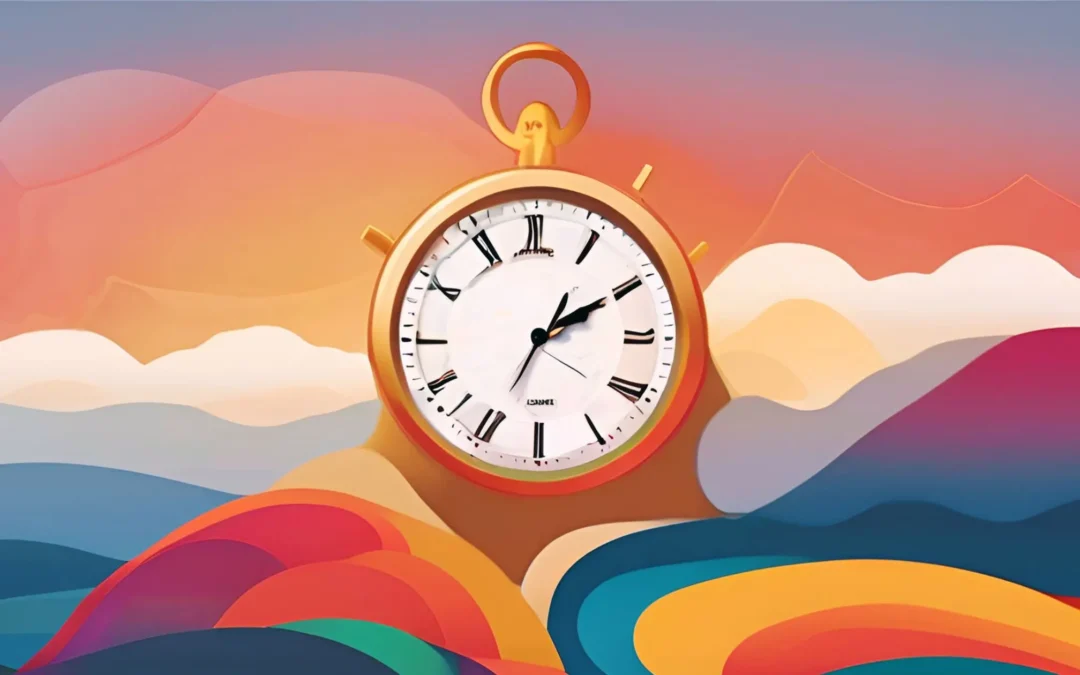Day the Do your goals freak you out? Do you think that the right time management steps will help you achieve them more quickly?
When we design our day, we don’t need to become fanatical about achieving our goals. But yet, this happens to many. We look at where we are and tell ourselves—this is not it, things need to change, I don’t like where my life is going. Should I give up?
Thoughts like these might seem a bit extreme, but they flash across our minds more frequently than we’d like to admit.
We think that discovering our purpose will help clear things up, but it often highlights the conflict between our goals and present reality. The good news is that feeling like we don’t have a handle on time (and our goals) is a common problem.
By reading this article, you’ll learn 4 simple time management steps that will help you master time using Day Design. By the end, you’ll have a no-bullshit process to make progress towards your most important goals by improving your schedule.
If you want to jump ahead, here are the time management steps we’ll cover:
Time Management Steps: How to Achieve Your Goals with a 4-Step Process
As a Day Designer, we hold ourselves accountable to time, with results being the natural byproduct of repeated, correct effort. We know that, given enough frequency, results will take care of themselves.
To be on the same page, let’s define results as actions we do or don’t take—an event with a yes or no output. By looking at results like this, we turn events into quantifiable data rather than emotionally charged evaluations of success.
We either sent an email, or we didn’t. We either called a family member, or didn’t. We went to bed at 11 am, or you didn’t.
The world teaches us that our results are the end all be all, but this thinking is limited. Regardless of whether or not we achieve the results that we want, we still can learn from the event no matter the result.
Outcomes are What We Learn from Our Actions
What’s far more critical to achieving goals are the outcomes of our results. Outcomes are what we learn from either taking or not taking action. What did we learn when we did or didn’t send that email or make the call when we said we would? Did we even wonder?
Most of us become distracted when we fail to accomplish the results we intend. The emotions strike up like a fire in our gut that can make us burn with guilt, even shame.
These emotions interfere with our ability to understand why we didn’t follow through with what we planned. Counterintuitively, there is hidden insight in missing the mark that holds the key to future growth and favorable results.
Now let’s get into the time management steps.
1. Select a Category
As a Day Designer, five categories, or goal channels, make up 360 Productivity.
They are:
- Health
- Work
- Relationships
- Community
- Spiritual
Every week, we’ll allocate time combined with specific actions for a goal in each category. By balancing each area, we’ll be on our way to elevating our overall quality of life.
For now, let’s start with Health as our area of focus.
2. Choose an Activity
Now that we’ve chosen a category, we need to decide what action we will complete. Since we’re focusing on Health as an example, let’s choose walking as the activity.
You can substitute any form of health-related activity like running, cycling, and swimming, but let the action dominate your mind instead of the results you want from that activity.
Instead, if you lead with getting healthy or in fantastic shape, these unmet results will often bring up reminders of times when it didn’t go well. (We’re here to take action, not dwell on the times when we let ourselves down.)
As we’ll see, the power starts from being intentional by combining a goal category with a specific activity.
3. Set a Timed Interval
Time is our greatest ally and tool for action. We will use it well by setting a timed interval around the activity—15, 30, 60 minutes.
If you haven’t exercised for a while, use short intervals. Even less than 15 works well. We tend to overcompensate for the lack of taking action by punishing ourselves with too much effort.
It’s the time when you haven’t exercised in two years but promise yourself you’ll work out for two hours. It’s not that you can’t do it, but trying to make up for lost time or going overboard right out of the gates isn’t sustainable.
We can’t maintain extremes for very long. We get burned out, tired, or think we’re just not cut out for it, which is why we quit.
Instead, select the least scary interval—5, 10, 15 minutes—that you can commit. Make it insanely doable. Let’s start with 10 minutes.
Avoid the habit of defining your health goal, like getting a sexier body or losing 50 pounds. Remember, that’s the result you want, which can act as a double-edged sword. For now, it’s simply a walk for 10 minutes.
Keep it simple—it’s not about a particular length of time or reaching the goal now. You’ll know your interval is the right starting point if it will get you to take action without excuse.
4. Set an Interval Frequency
The final step is to set the interval frequency, or how many times you’ll complete the activity during the week.
The same rule applies from setting timed intervals—don’t go overkill by promising yourself that you’re going to work out 2 hours every day.
Start with 1 to 3 times a week, and stick with this frequency. You can set specific days like Mondays or Wednesdays to complete the activity, but the number of days per week is usually better, as things can come up.
What’s more important than completing the specific task every Monday or Wednesday is that you do the activity during the week for the agreed-upon sessions.
If you decide to go to a fitness class and miss it because you had to stay late for work, don’t wait until next week for the class. Instead, complete a health-related activity, so you’ll hit your interval frequency target.
Improving Your Weekly Schedule
Anyone familiar with the Eisenhower Matrix knows it’s a fantastic way to prioritize tasks, classifying them on a scale of importance and urgency. But most folks use it for big goals or work challenges and are still unsure how to balance short and long-term goals with their schedules.
That’s where Day Design simplifies the process by offering a different way to improve our daily schedules.
Here’s the process again:
- Select a Category
- Choose an Activity
- Set a Timed Interval
- Set an Interval Frequency
Now apply this simple process to each 360 Productivity category.
By using this system, we can monitor our progress at the end of the week by how frequently we honor time. When seven days have passed, we can answer a simple question—did we complete our intervals when we planned? Yes or no? This data is helpful because we can then ask why or why not.
During an interval, we don’t place much emphasis on what happens. Even if we didn’t get everything done that we hoped, it’s ok. Every day is different.
Maybe you walked a half-mile today but two miles on Wednesday for the same interval. What happened? Although it’s essential to check in and give yourself feedback, labeling these results better or worse is missing the point.
What about the fact that we took action on those days? What did you learn? Maybe your timed interval is too long or your frequency is too often.
Time Management Steps That Work
Results happen when we accumulate a progression of intervals over time. That’s why frequency is one of our most powerful tools. Add frequency. And more frequency.
What happens to us can be more profound—our beliefs change. New behaviors generate new beliefs as we reinforce them over time. Each time we complete an interval, we whisper new beliefs to our subconscious. Through the process—by answering this frequent yes—how we feel about ourselves will change.
Frequent actions are the seeds to grow new associations. As we get closer to reaching our goals, they’re not the giants they used to be. They’re smaller, almost laughable. We know that we can do more because we’ve proven it to ourselves.
When we reach a goal, an excited what’s next? will be our response.
Do you want to learn more proven strategies to improve your time management? Sign up for the free Day Design Video Course.




